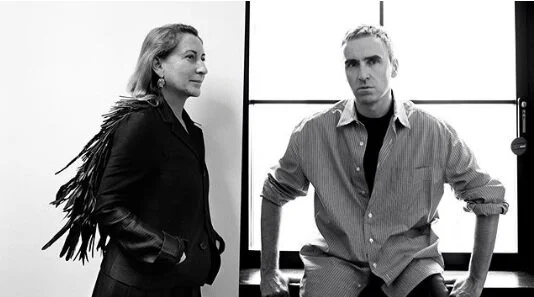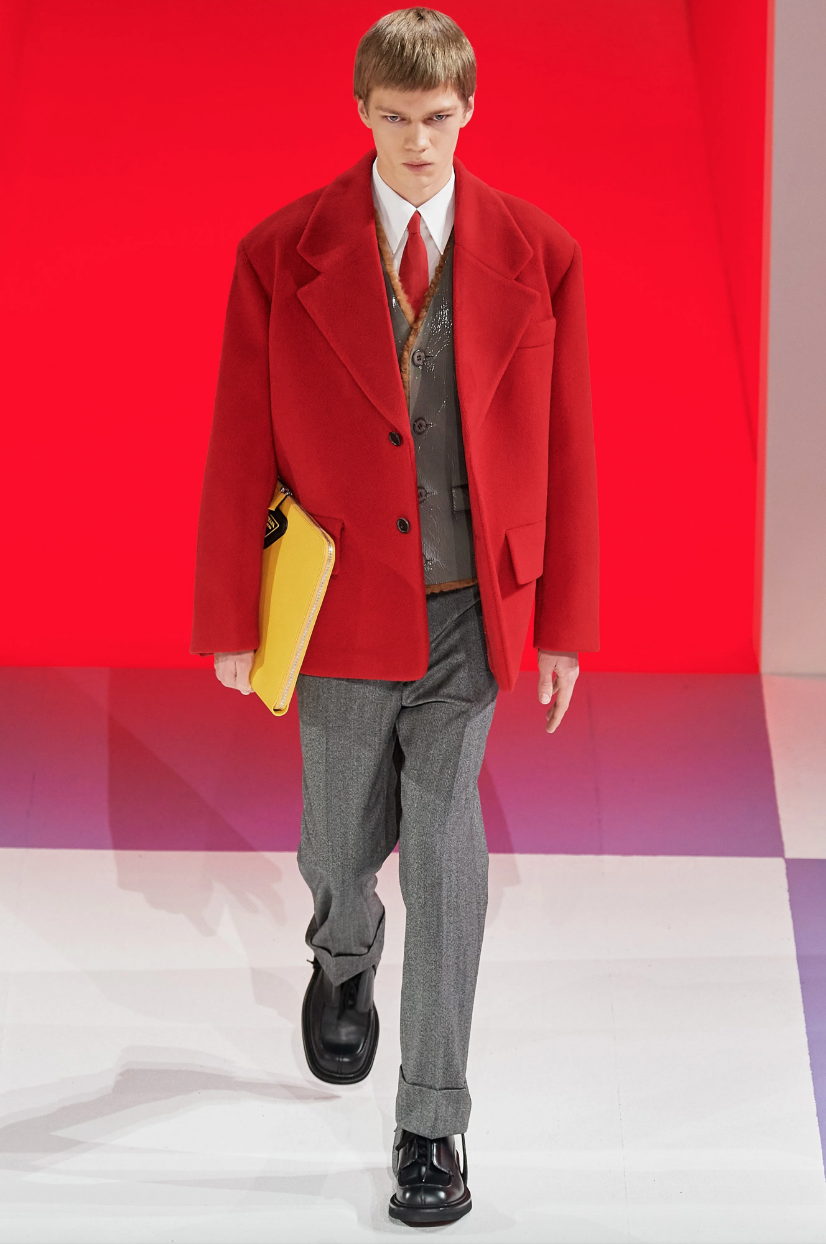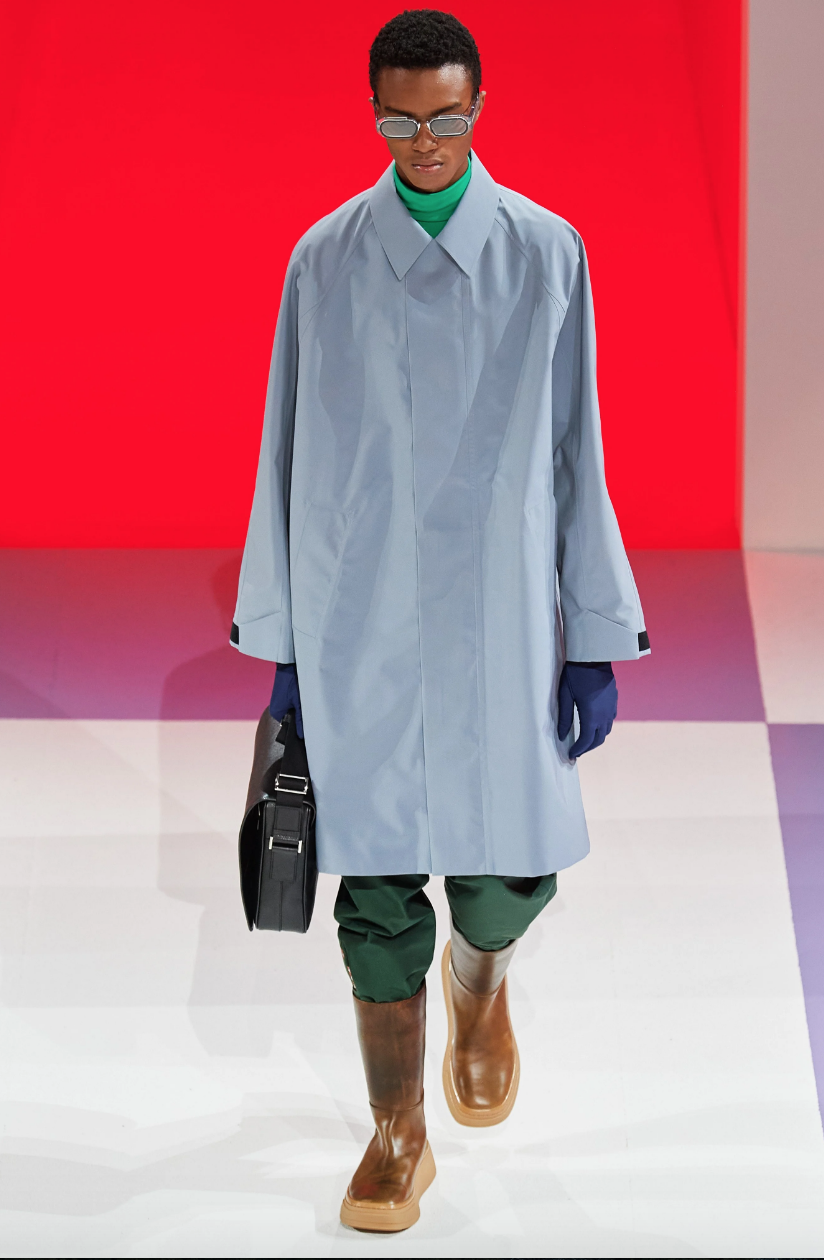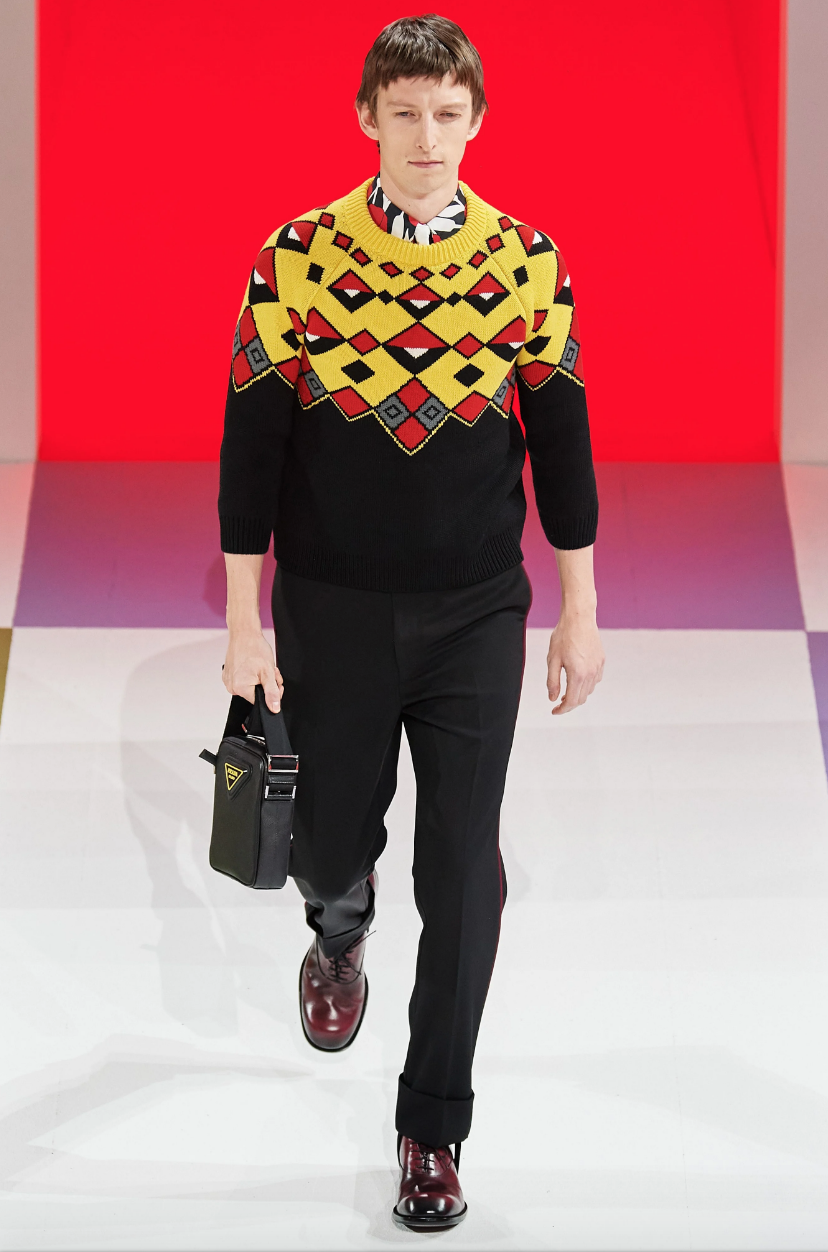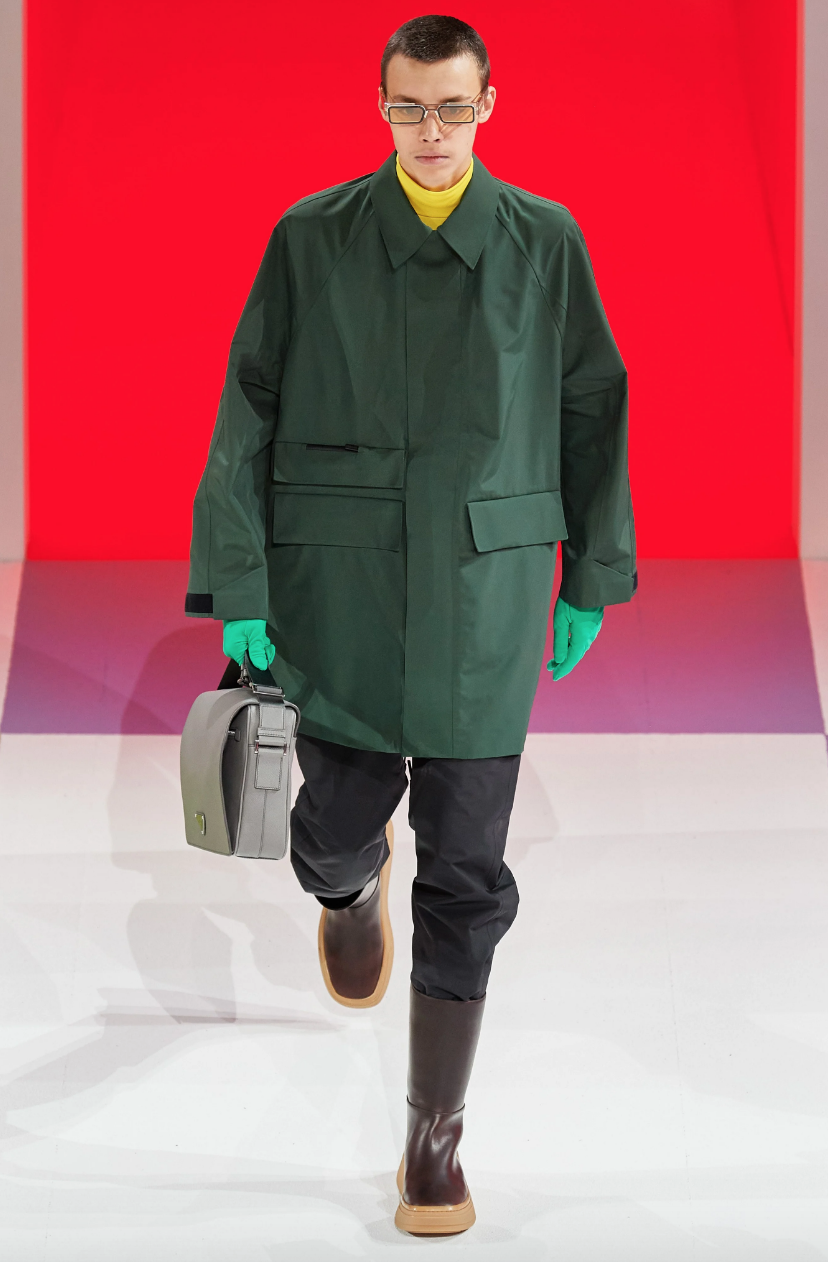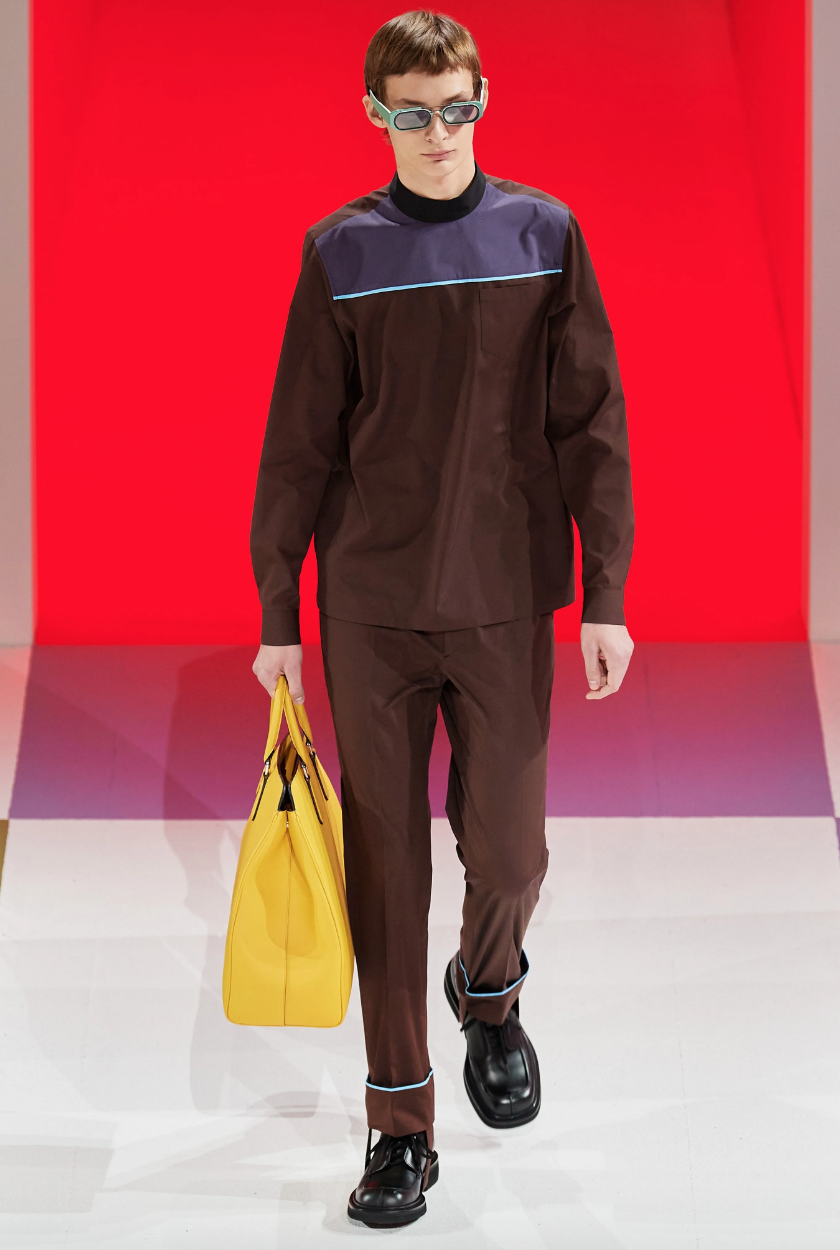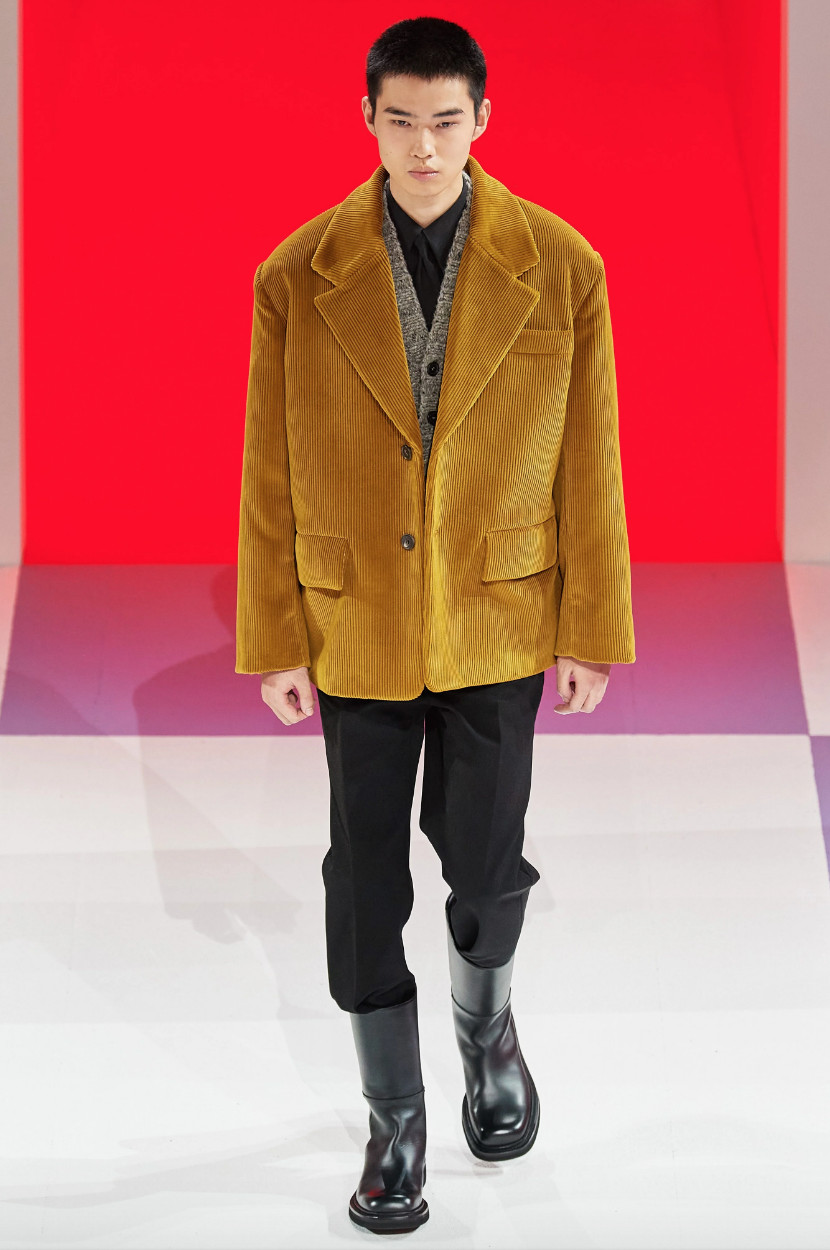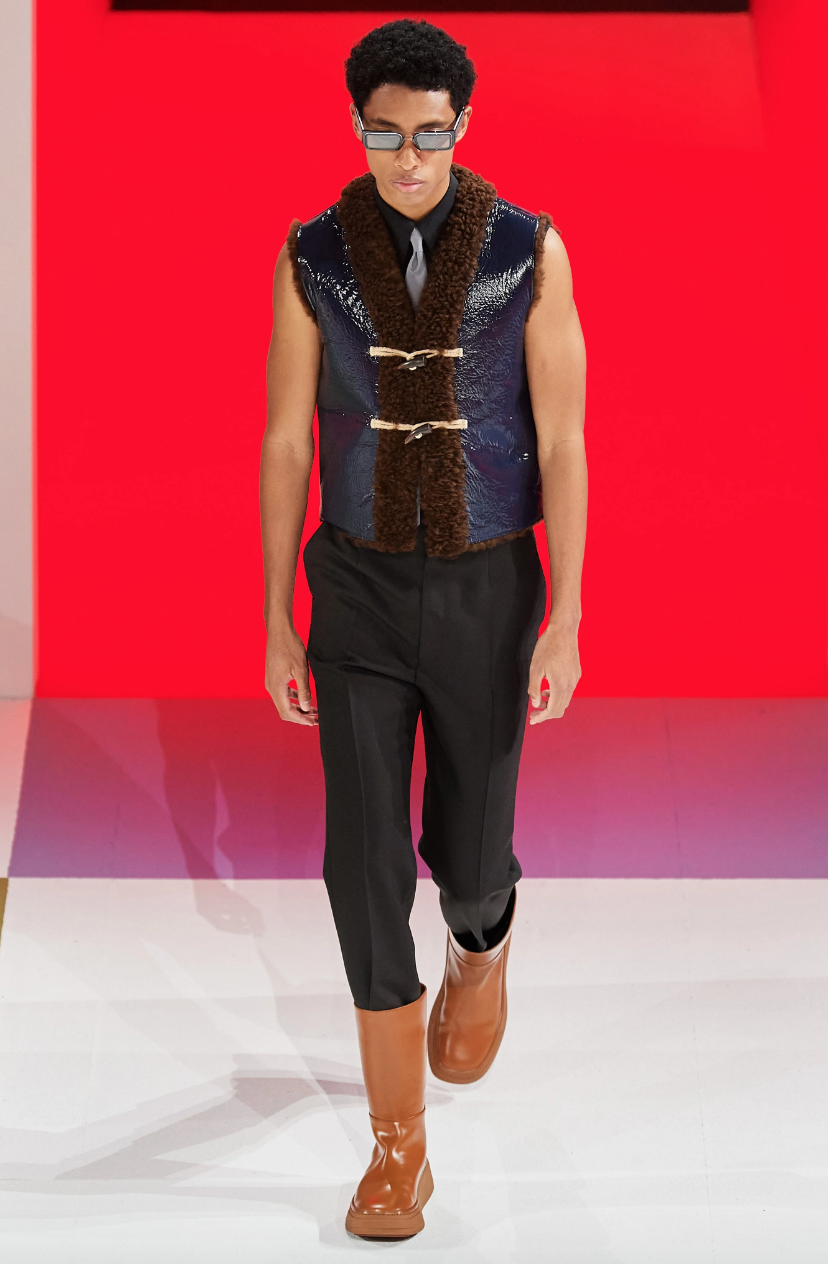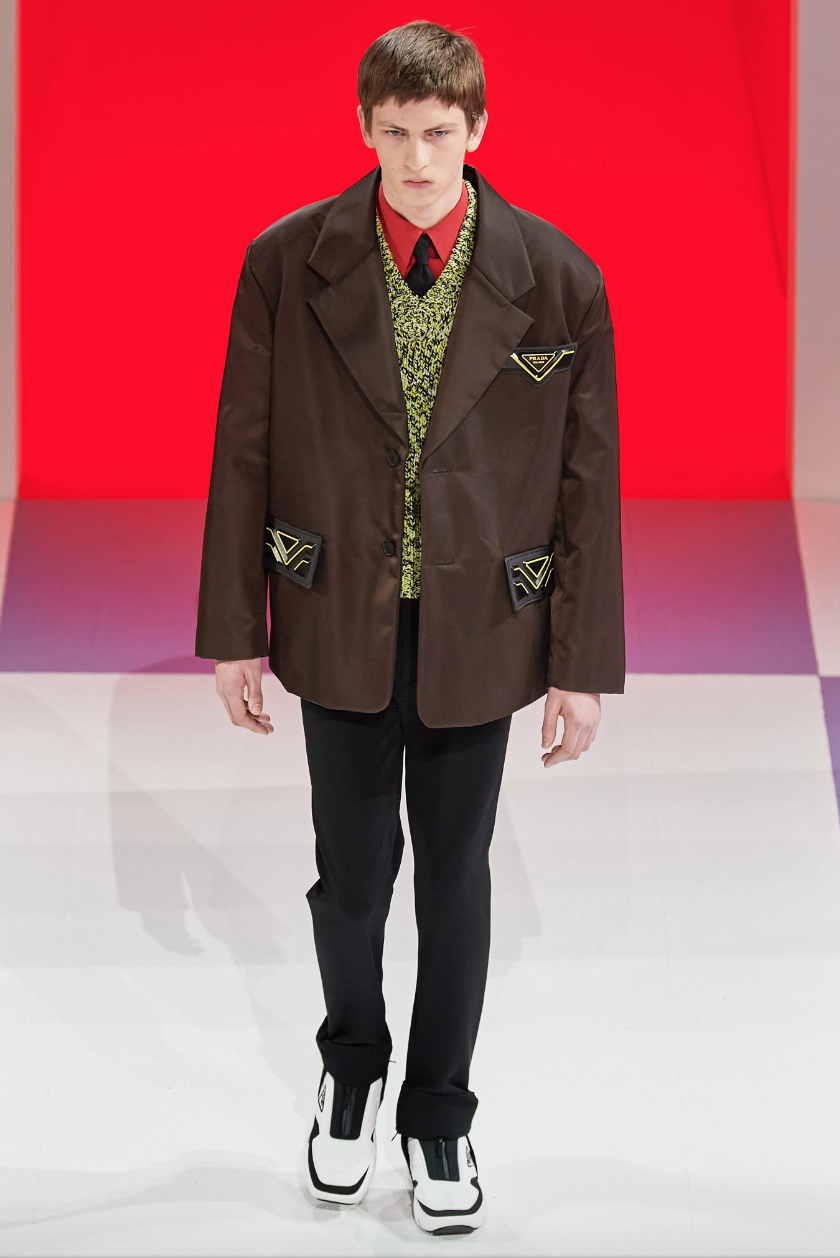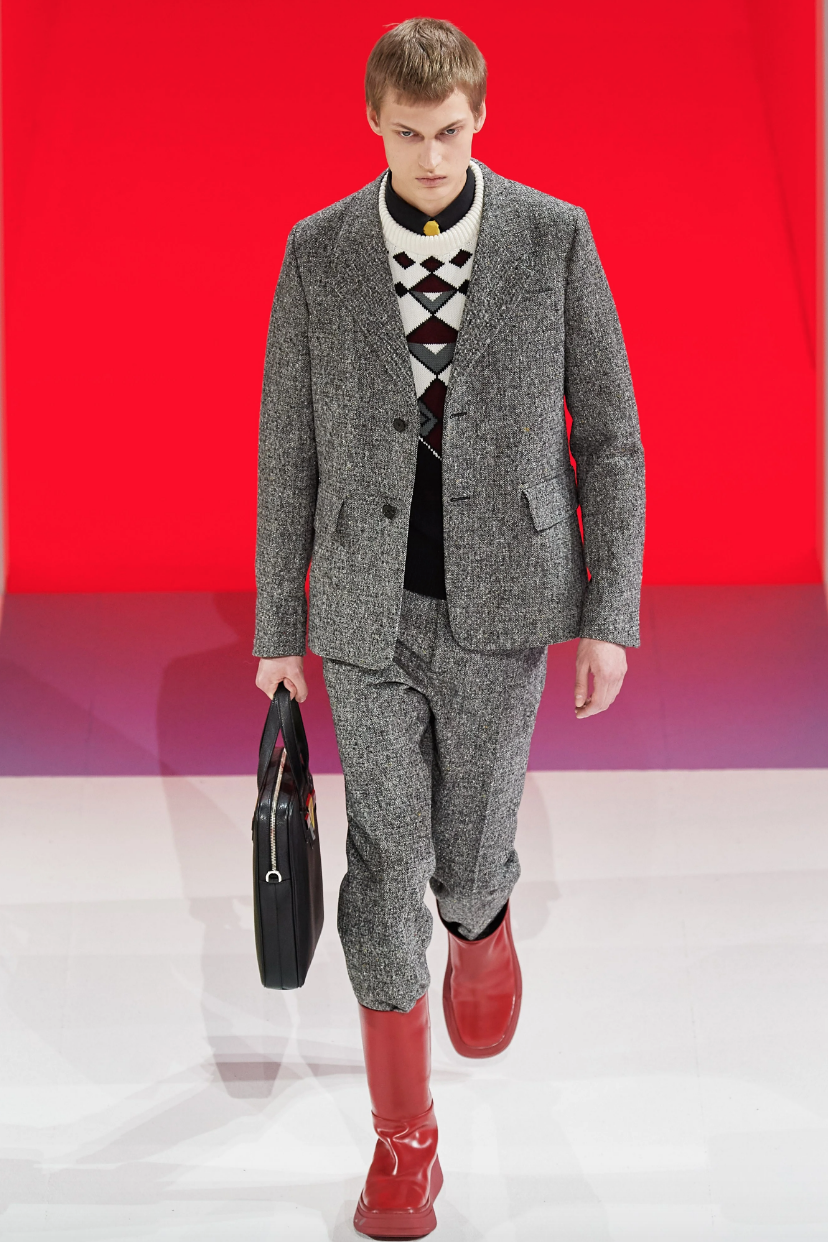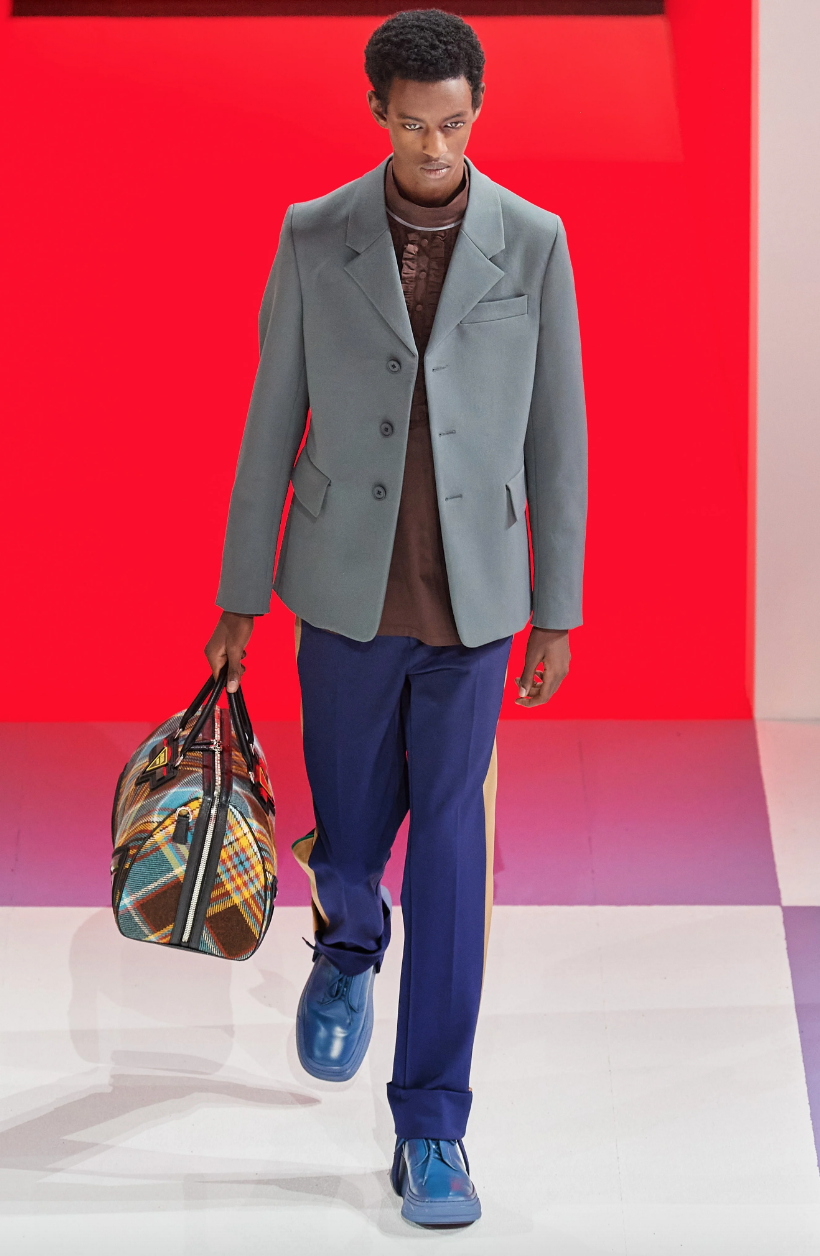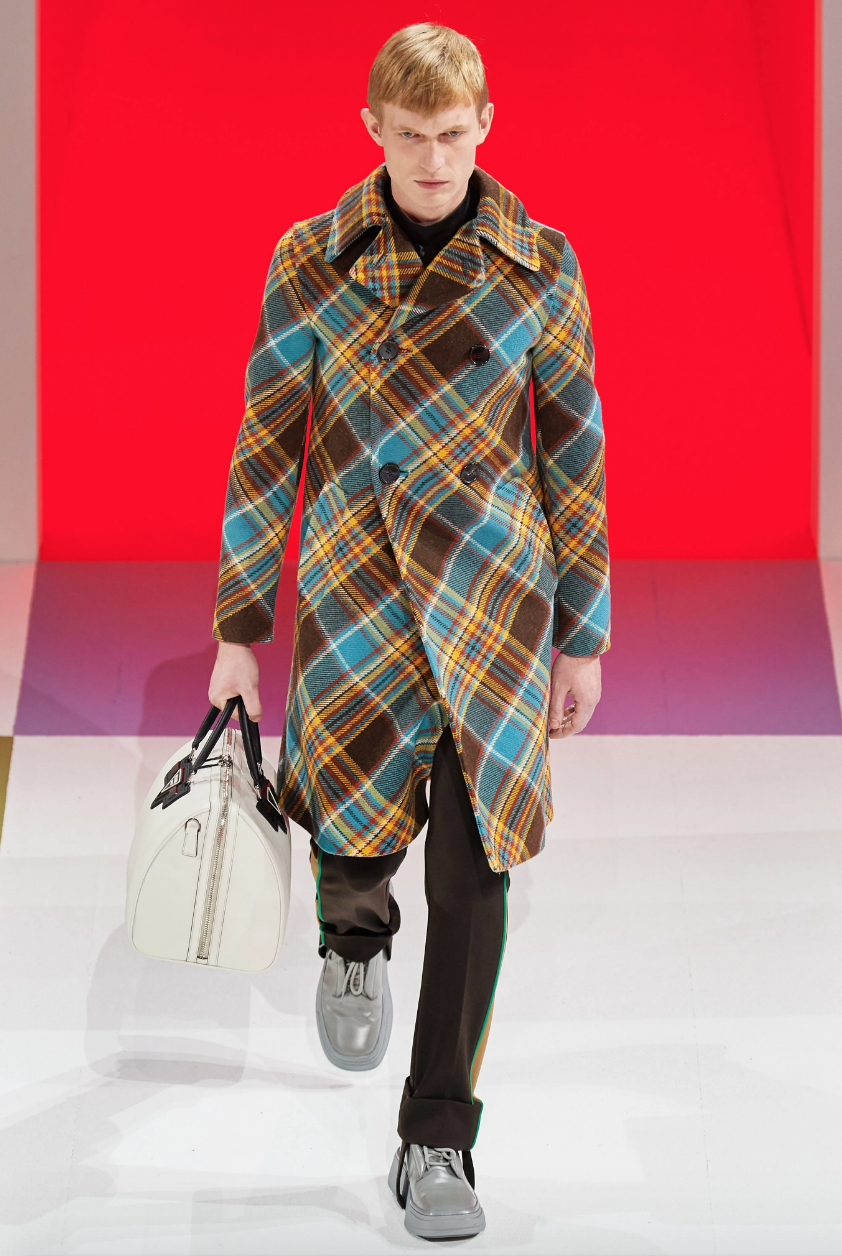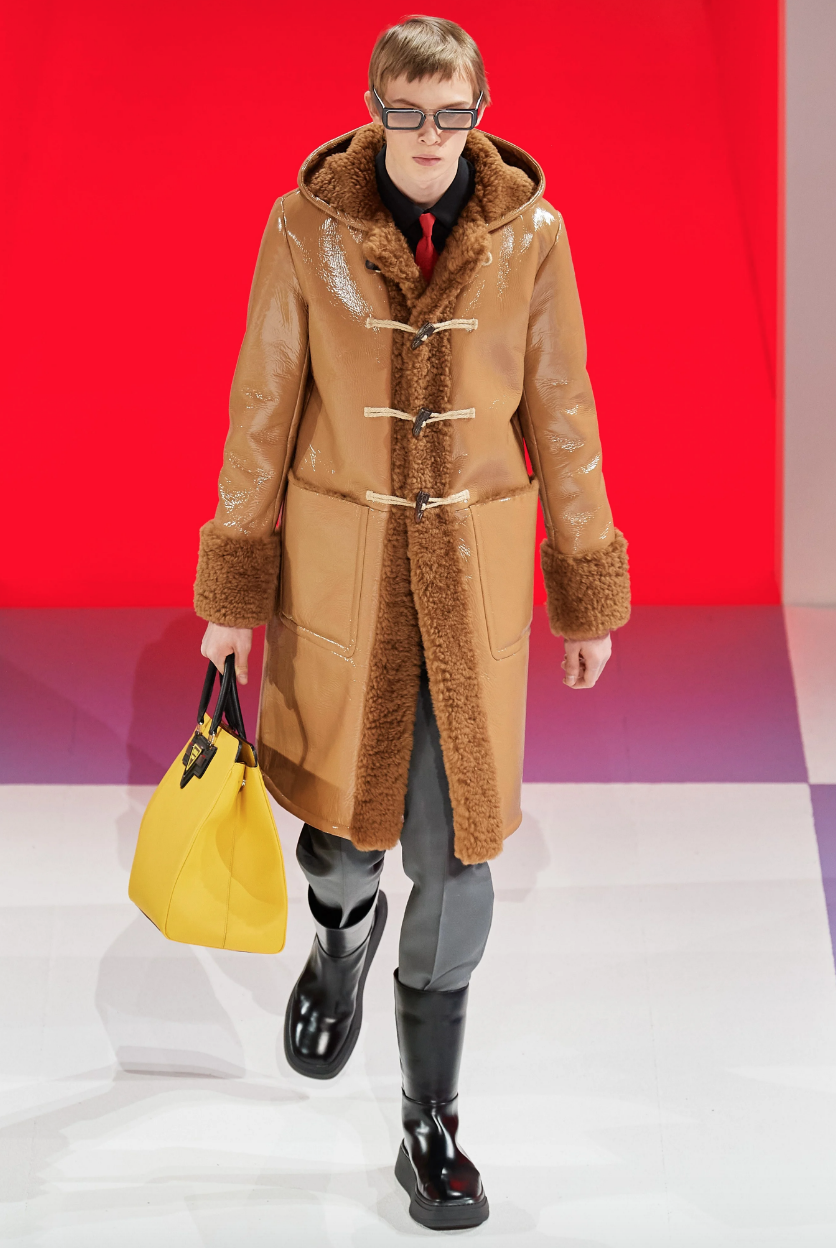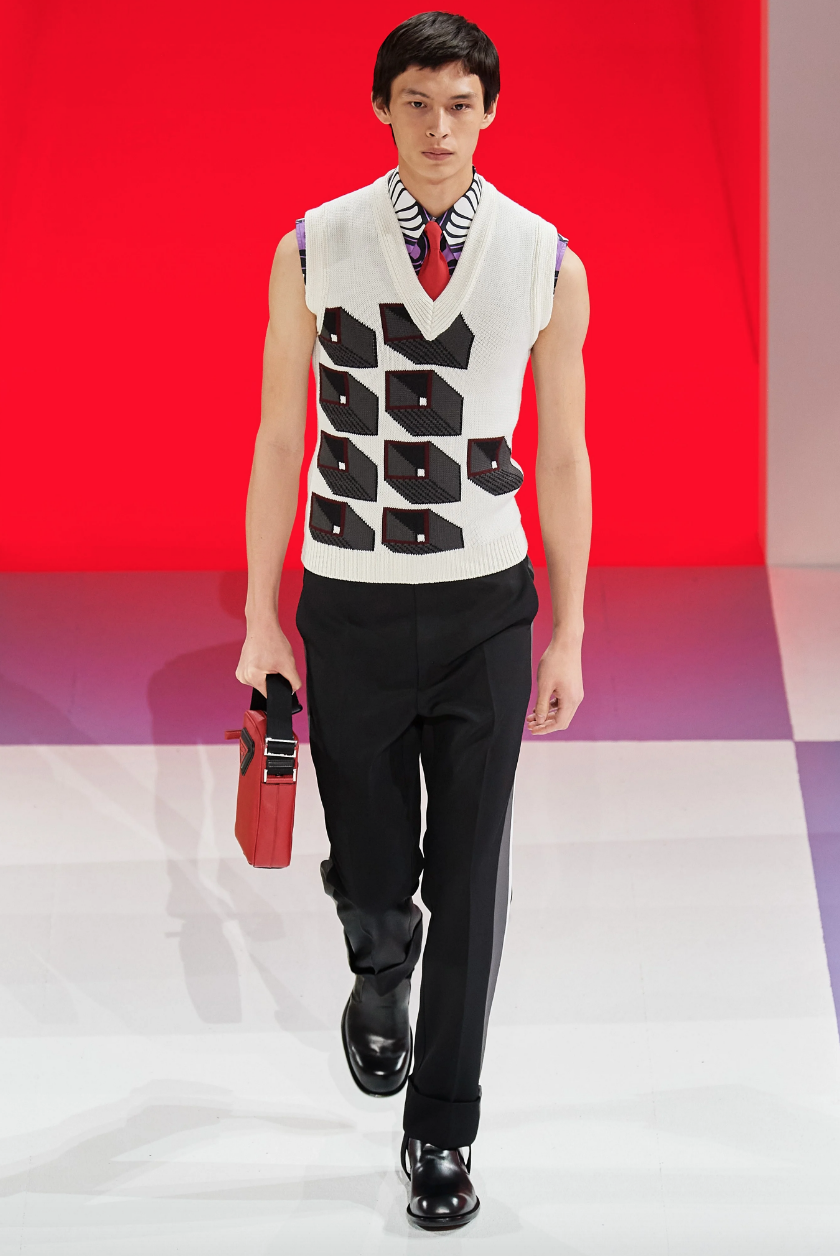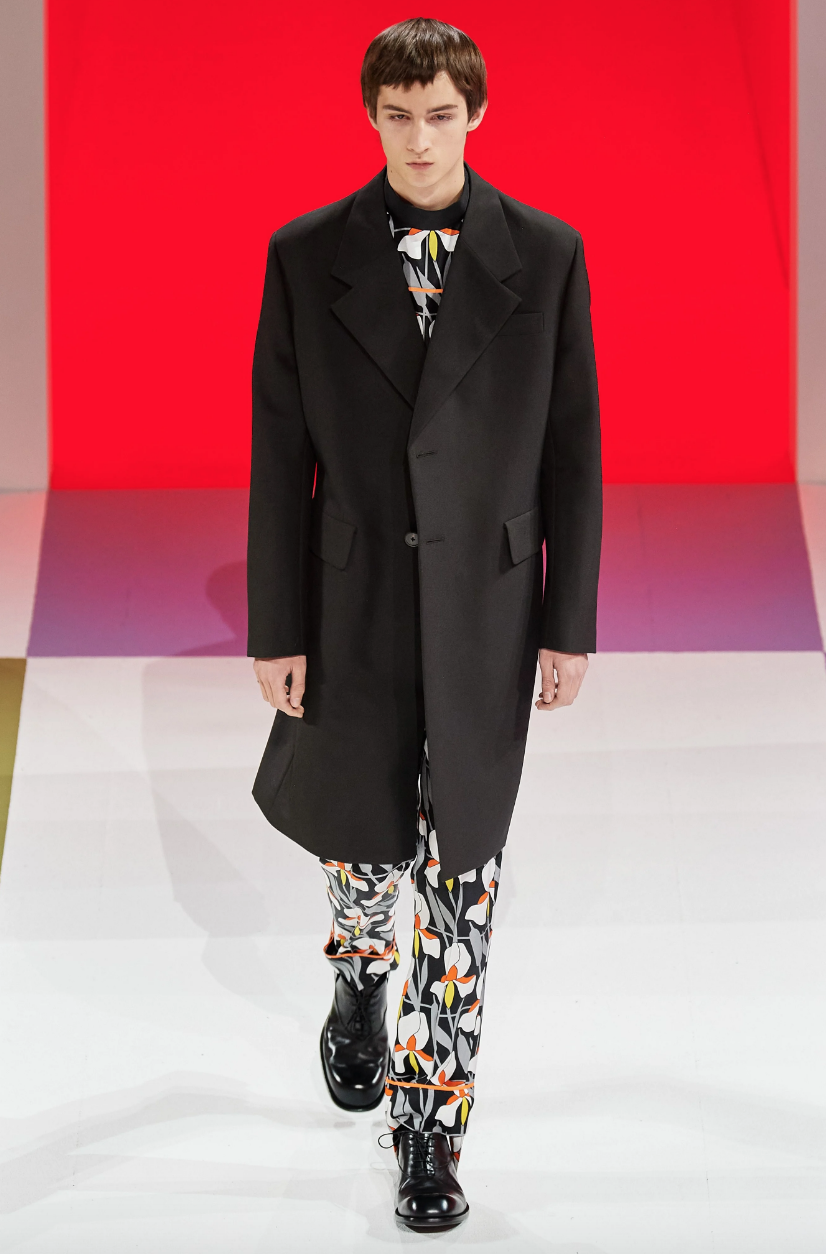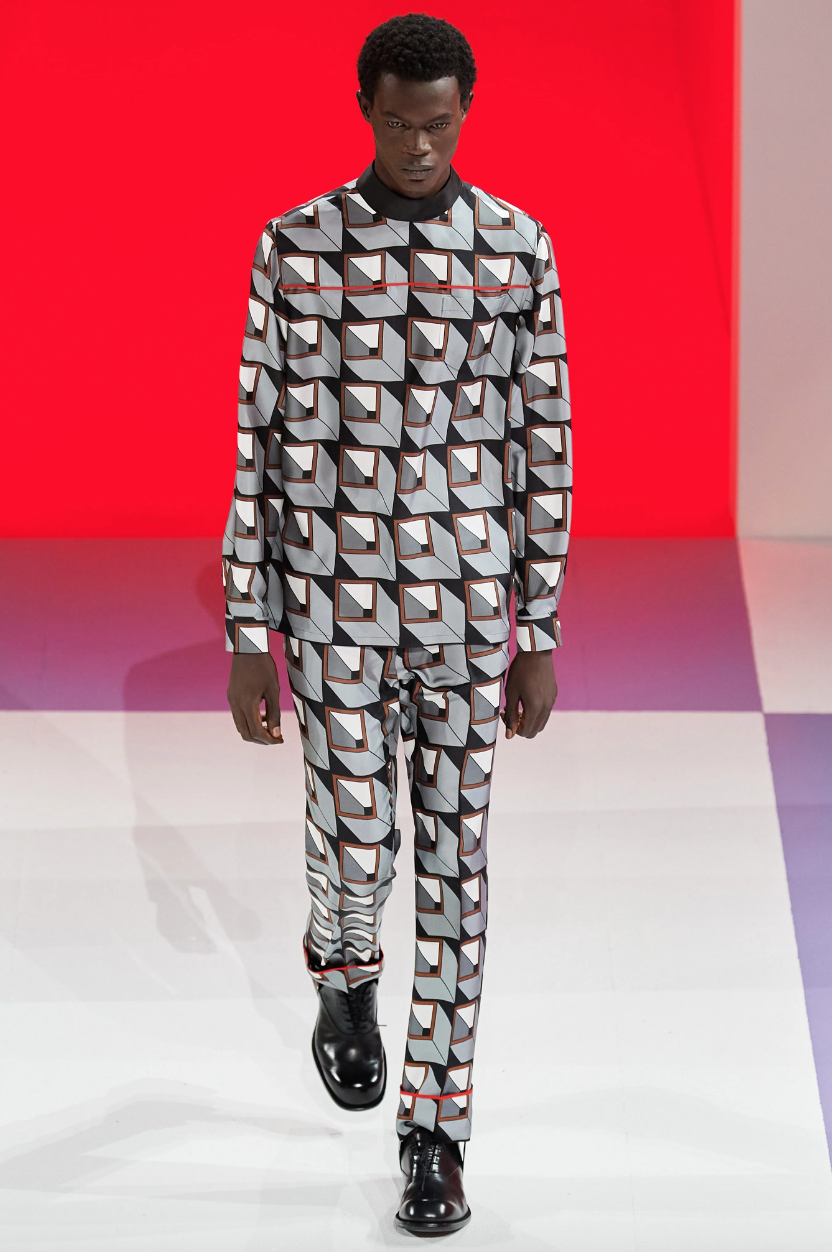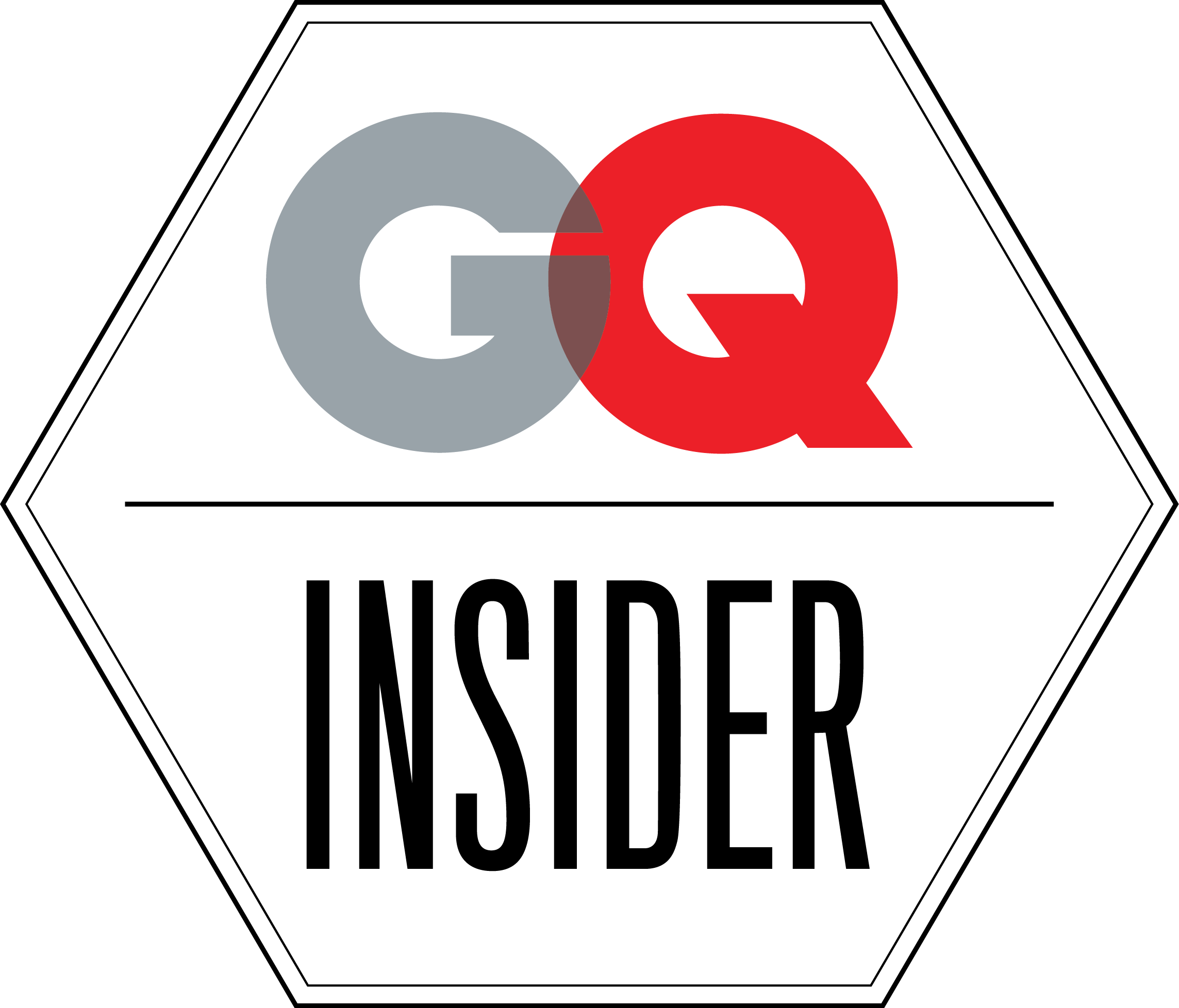As a swelling and ominous bass obscured heroic but fading trumpets the lights came up over a Prada set that closely resembled one of Giorgio de Chirico’s metaphysical paintings. There were two bare but Palladian-proportioned arched piazzas; in the middle of each was the statue of a man on a horse on a podium—classic 19th-century masculine heroism.
Except, naturally, not quite. The horse and rider were constructed like those cardboard dinosaur statues for kids, from insertable, flat, anonymizing sections. Said Mrs. Prada in her post show debrief: “I wanted an equestrian statue, but of course equestrian is not politically correct, so I told Rem [Koolhaas], ‘Let’s do an equestrian that is totally non-heroic.’”
Which allows us to canter on to the clothes. These were bookended between the bare-armed tank top looks at the top and high notch-collared two-button topcoats at the end: two particularly Prada-ish chapters in the recent masculine narrative of dress. Between them, even if Mrs. Prada indicated it wasn’t the intention, we seemed to take a survey of various professionally specific styles of dress seen through a house eye. There were young executives in three-piece suits or mismatched tailored separates, portfolios thrust between arm and hip, in different volumes of jacket. We transitioned to rural worker in mid-calf boots and oversized corduroy jacket, then onto a more urban kind of Prada hipster freelancer combination of the previous two categories that mixed elements from both and inserted some technical touches and piped sport raised graphics on pocket flaps. Two Macintosh-like rubberized coats matched with baggy pants tucked into beaten leather galvanized sole boots (plus rectangular lensed shades) were a little scientist-fights-contagion. Following those was an absolutely wicked green half-length coat that seemed particularly fashion show reviewer.

